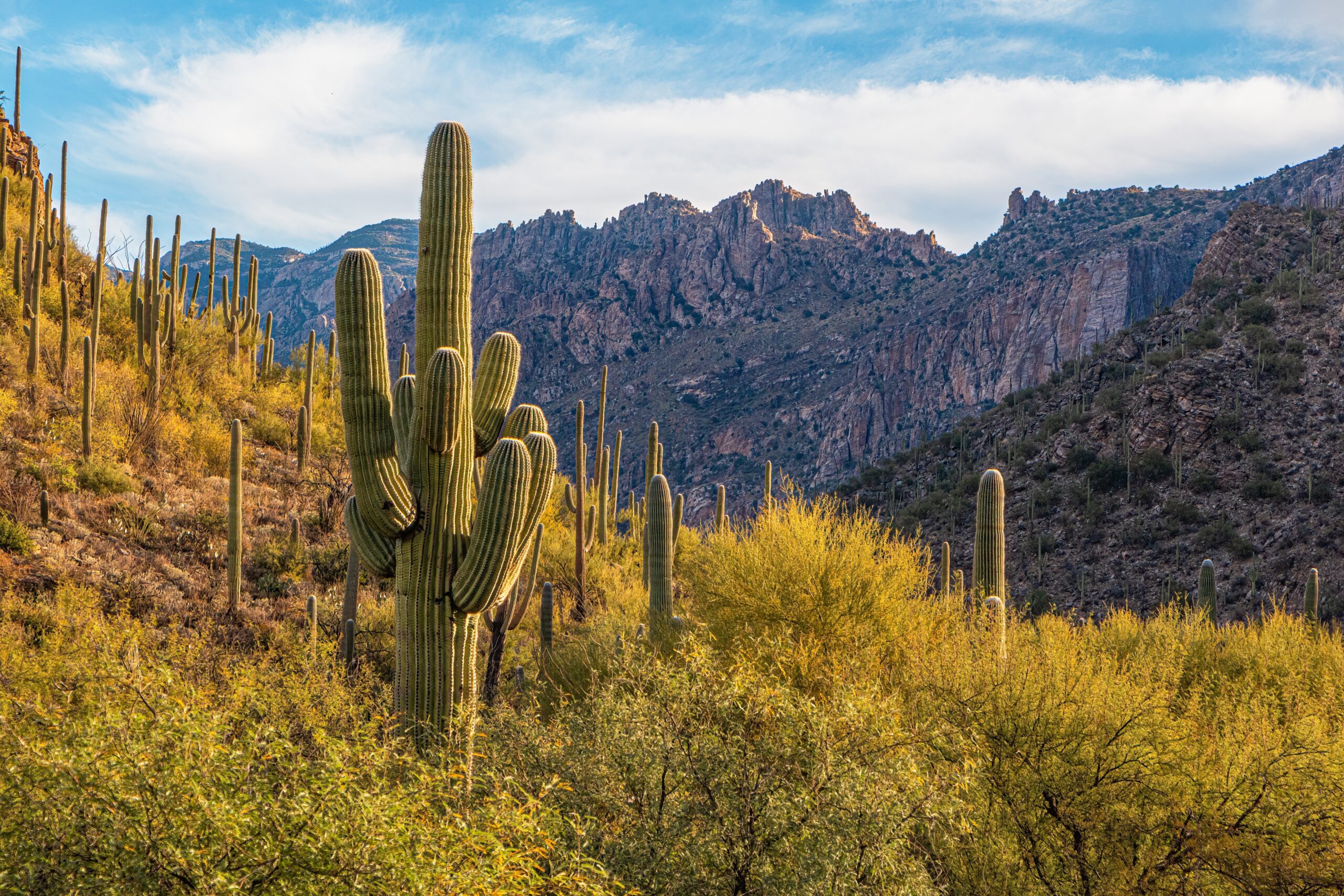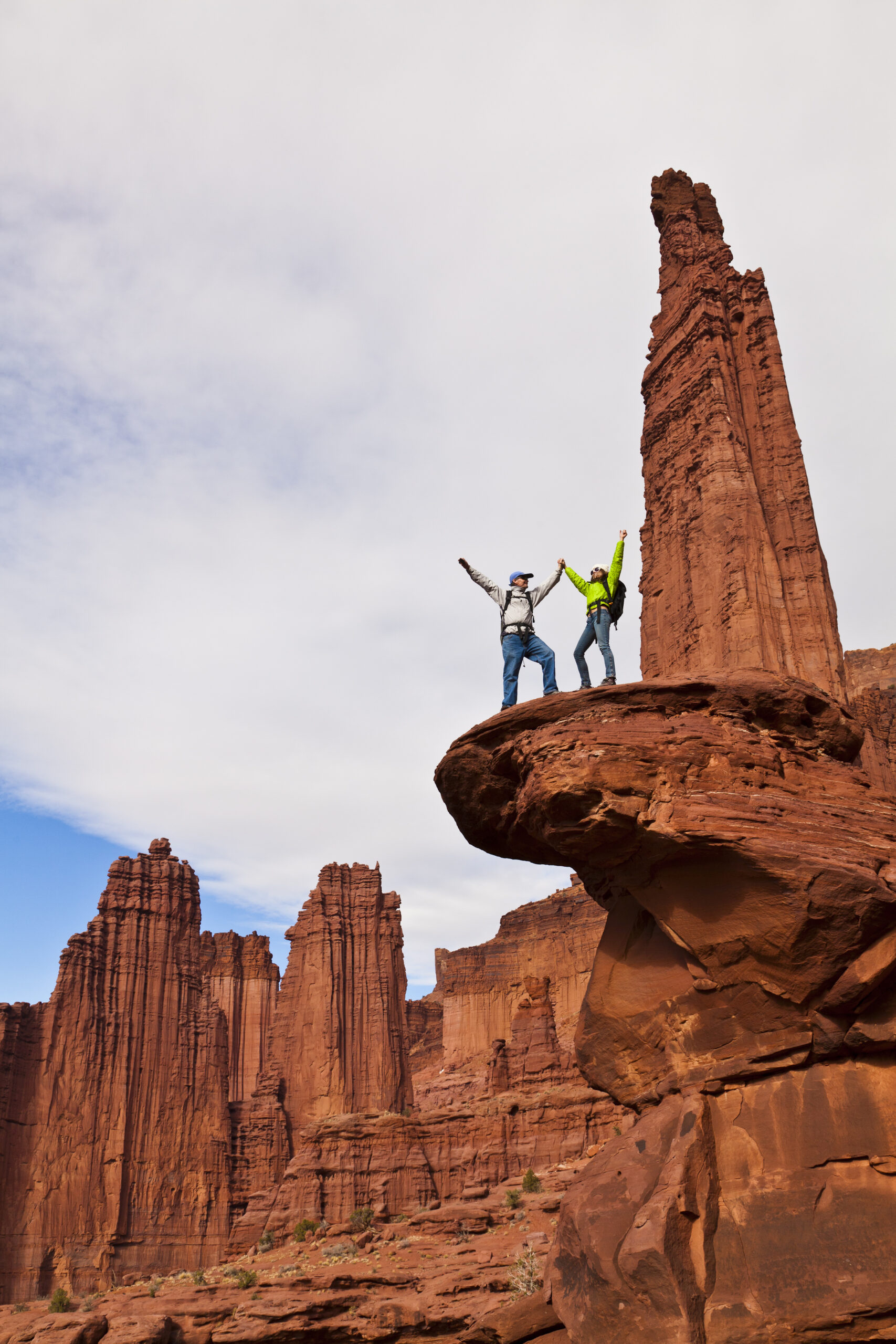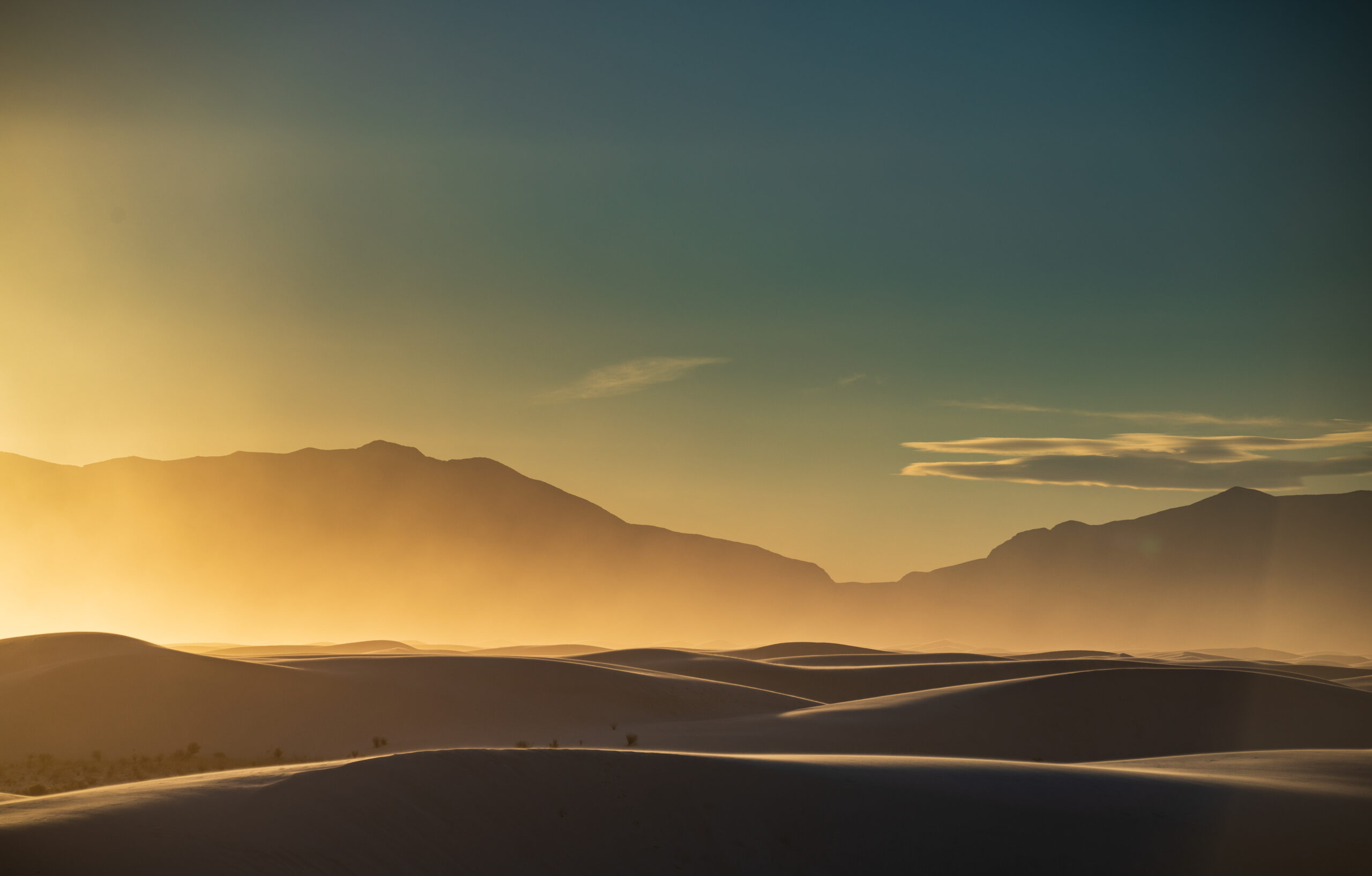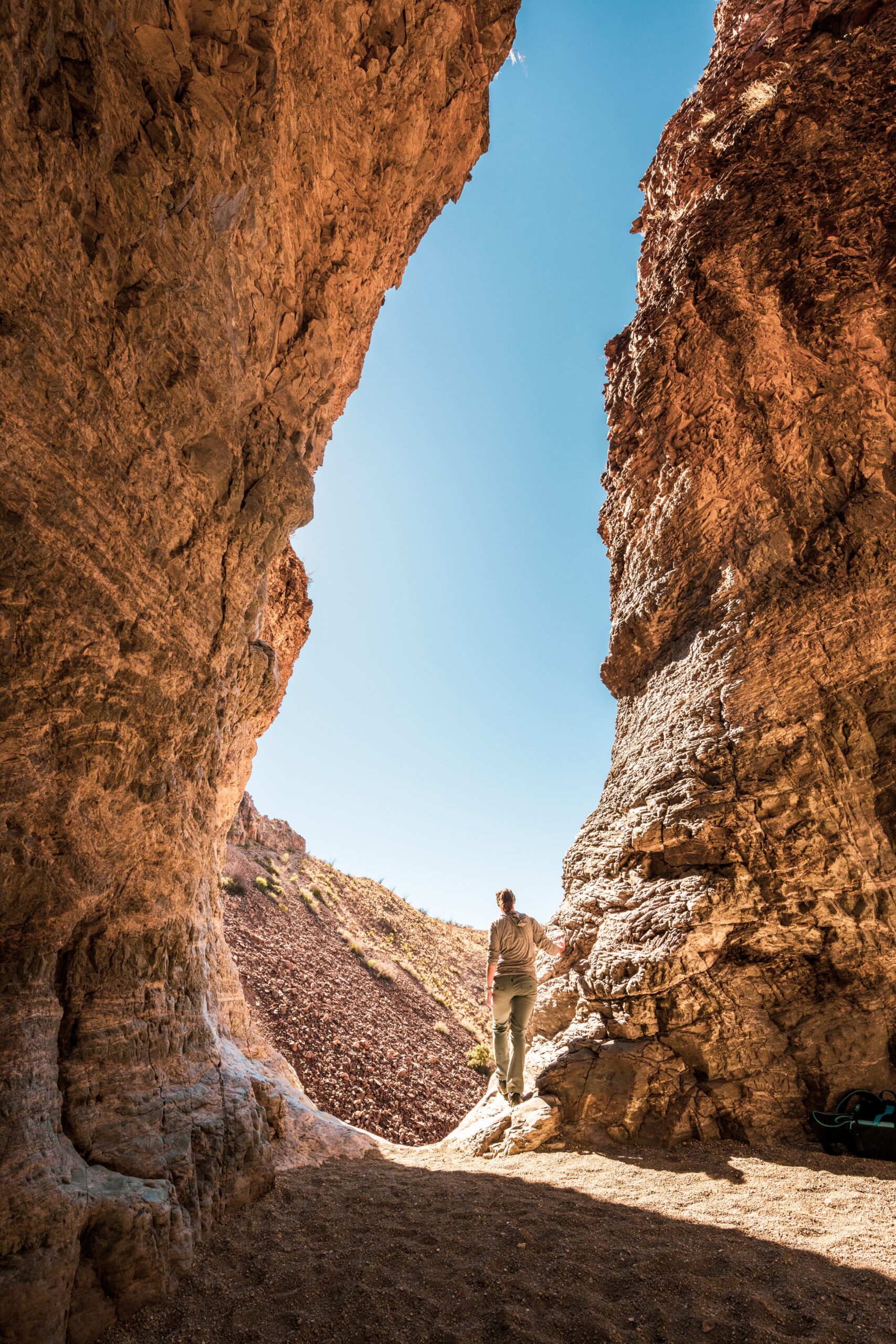If you haven’t already noticed, the evenings are starting to get a touch cooler. While daytime temps may still be soaring in much of the United States, the leaves—especially in the high country—are already changing colors. Not surprisingly, that’s leading many RVers (though certainly not all) to head away from the high mountains and toward the deserts, where cooler temps create the perfect conditions for long hikes or bike rides or simply soaking in the stark beauty of wide-open landscapes.

FROM ICONIC RED ROCKS
To towering sand dunes, the desert offers unparalleled beauty and adventure. Let’s explore some of North America’s best desert locations, highlighting the features and activities and mapping out breathtaking views, exciting activities, and paths where ancient civilizations have left their mark. Before you head out, though, remember to prepare your RV. Many of these locations will
take you off the main highways.

So, ensure you have ample water and power supplies as well as a cooling system that can handle the widely fluctuating desert temperatures common at this time of year. In addition, camping etiquette is as important as ever in these delicate ecosystems. Follow the Leave No Trace principles, respect the diverse desert wildlife, and be especially cautious with fire safety due to the dry conditions. Finally, don’t forget to pack your sun protection, and some sturdy hiking or biking gear, and be prepared for cool or even downright cold evenings and nights.

SONORA DESERT ARIZONA
STARTING IN THE HEART of the Sonora Desert, which is famous for its towering saguaro cacti and striking sunsets, as well as the indigenous Hohokam people who thrived in the area over a thousand years ago despite the harsh climate. Here, you can find ancient petroglyphs in Saguaro National Park, which offers a glimpse of the desert’s rich cultural heritage. Keep a look out for wildlife, as the desert’s biodiversity is surprising. This area is a prime destination for people who are ready to explore natural beauty. And the cooler weather is perfect for full day hikes and scenic drives through the desert.
Activities:
Hiking, biking, rock climbing, and scenic drives
Highlight:
Hike to Delicate Arch, one of the park’s most photogenic spots, and stop by the Wolfe Ranch trailhead to see petroglyphs.
How to get there:
From the Mojave Desert, head north on I-15 and east on I-70 toward Moab, Utah. Arches is just five miles north of Moab on US-191.

MOJAVE DESERT CALIFORNIA
READY TO CONTINUE? It’s time to head west to the rugged Mojave Desert. This region is steeped in both natural beauty and ancient history. For example, the Chemehuevi people left behind petroglyphs and other artifacts that can still be found today. At Mitchell Caverns, you can take guided tours to learn more about the area’s geological and cultural past. In the fall, the mild daytime temperatures make it ideal for outdoor exploration and dispersed camping.
Activities:
Off-roading, hiking, sandboarding, and exploring the desert ecosystem
Highlight:
Visit Kelso Dunes for hiking or sandboarding, or take a tour of Mitchell Caverns to see ancient tools and learn about the Indigenous peoples
How to get there:
From the Sonoran Desert, take I-10 west into California and head north on Kelbaker Road for about 50 miles to reach the Mojave National Preserve. RV campgrounds are scattered along the way.

ARCHES NATIONAL PARK UTAH
CONTINUE YOUR JOURNEY northeast into Utah’s famous red rock country. Arches National Park is known for its surreal geological formations and ancient Ute petroglyphs. These rock carvings, depicting horseback riders and bighorn sheep, are tucked near
the park’s entrance, offering both natural and historical wonders.
Activities:
Hiking, biking, rock climbing, and scenic drives
Highlight:
Hike to Delicate Arch, one of the park’s most photogenic spots, and stop by the Wolfe Ranch trailhead to see petroglyphs.
How to get there:
From the Mojave Desert, head north on I-15 and east on I-70 toward Moab, Utah. Arches is just five miles north of Moab on US-191.

CANYONLANDS NATIONAL PARK UTAH
JUST A SHORT DRIVE from Arches, Canyonlands National Park offers a more remote and rugged experience. The park is home to the Great Gallery in Horseshoe Canyon, one of the most famous rock art panels in the Southwest, featuring ancient petroglyphs and pictographs created by the Fremont and Ancestral Puebloan cultures. The crisp fall air makes it perfect for long hikes and scenic exploration.
Activities:
Hiking, 4×4 off-roading, and mountain biking
Highlight:
Explore the Needles District for dramatic rock formations or take a hike into Horseshoe Canyon to see ancient artwork that’s over 2,000 years old
How to get there:
Canyonlands is about 40 miles southwest of Arches National Park. Head down US-191, then turn west on UT-211 to reach the Needles District. RV camping is available nearby

CHIHUAHUAN DESERT NEW MAXICO
FROM UTAH, head south into New Mexico’s Chihuahuan Desert to explore the surreal landscape of White Sands National Park. The region has a deep history, with the discovery of fossilized human footprints dating back over 10,000 years! The gypsum dunes are an unforgettable sight, and cooler fall temperatures make it easier to explore the open landscape and experience the park’s unique beauty
Activities:
Hiking, dune sledding, and photography
Highlight:
Try dune sledding or take a sunset hike to see the dunes glow under the evening sky. Stop by the visitor center to learn about the park’s prehistoric footprints.
How to get there:
From Utah, take I-15 south to I-40 east, then head south on US-70 to reach White Sands National Park. RV parks and campgrounds are available in nearby Alamogordo.

CARLSBAD CAVERNS NATIONAL PARK NEW MAXICO
NOT FAR FROM WHITE Sands lies Carlsbad Caverns National Park, where you can explore massive underground chambers filled with stalactites and stalagmites. In addition to the caves, prehistoric Native American artifacts and pictographs have been found in the surrounding area, adding a fascinating historical element to your visit. The temperatures and humidity in the caverns are kept consistent year-round (at 56 degrees F or 13 degrees C), and the cooler weather above ground makes for a pleasant day of surface-level exploration.
Activities:
Cave exploration, hiking, and bat flight viewing at sunset. Don’t worry; you only have to go spelunking if you so choose.
Highlight:
Explore the Big Room within the caverns before checking out nearby Rattlesnake Canyon to view ancient petroglyphs.
How to get there:
From White Sands, head east on US-82, then south on US-285 toward Carlsbad. RV-friendly campgrounds are located in nearby towns.

BIG BEND NATIONAL PARK TEXAS
END YOUR DESERT EXPLORATION in the remote and rugged Big Bend National Park, located in West Texas along the Rio Grande. This park is a haven for outdoor enthusiasts, but it’s also steeped in history, with rock shelters, petroglyphs, and pictographs left by ancient civilizations. Visit the Hot Springs Historic District to see these carvings while enjoying the area’s natural hot springs. Fall offers mild weather, making it the perfect time to explore the rugged desert and river landscape.
Activities:
Hiking, river trips, and mountain biking
Highlight:
Hike the Santa Elena Canyon or visit the Hot Springs to see ancient petroglyphs carved into the rock walls.
How to get there:
From Carlsbad Caverns, head south on US-285 into Texas, then follow US-90 west to reach Big Bend National Park. Several campgrounds within the park itself cater to RVers.

EXPLORING THE DESERT IN THE FALL is an experience unlike any other. With cooler temperatures, fascinating ancient artifacts, and fewer crowds, this is a wonderful time to hit the road and discover the incredible beauty and history of North America’s deserts. From the towering saguaro cacti of Arizona to the surreal white dunes of New Mexico to flowing rivers, each stop on this journey is unique and awe-inspiring.

